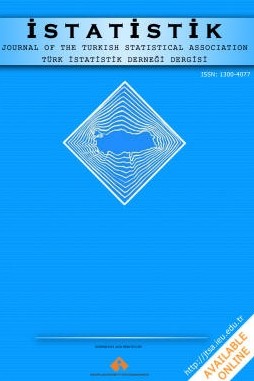Improved estimators for estimating the population mean in two occasion successive sampling
Improved estimators for estimating the population mean in two occasion successive sampling
This paper addresses the problem of estimating the population mean of the study variable in two occasions successive sampling. Based on the available information from the first and second occasions, class of estimators produced under two situations, i) when the information on a positively correlated auxiliary variable with the study variable is available on both the occasions and ii) when the information on the auxiliary variable which is negatively correlated with the study variable is available on both the occasions. Properties of the suggested class of estimators have been studied and compared with the sample mean estimator with no matching from the previous occasion and traditional successive sampling linear estimator. The study is supported by an optimal replacement policy. Empirical study also has been illustrated to show the performance of the recommended estimators theoretically.
Keywords:
Study variable, Auxiliary variable, Bias Mean Square Error, Successive sampling,
___
- Biradar R. S. and Singh, H. P. ( 2001). Successive sampling using auxiliary information on both occasions. Calcutta Statistical Association Bulletin, 51, 243-251.
- Eckler, A. R.(1955). Rotation sampling. Ann. Math. Stat. 26: 664-685.
- Feng, S and Zou, G. (1997). Sampling rotation method with auxiliary variable. Communication in Statistics – Theory and Methods, 26(6), 1497-1509.
- Jessen, R. (1942). Statistical investigation of a sample survey for obtaining form facts. Iowa Agricultural Experiment Station Road Bulletin no. 304, Ames, USA.
- Murthy, M. (1967). Sampling Theory and Methods. Statistical Publishing Society, Kolkata, India.
- Okafor, F.C., Arnab, R.(1987). Some strategies of two-stage sampling for estimating population ratio over two occasions. Austrian Journal of Statistics 29(2): 128-142.
- Patterson, H. D. (1950). Sampling on successive occasions with partial replacement of units”, Journal of the Royal Statistical Society B, 12, 241-255.
- Rao, J. N. K. and Graham, J.E. (1964). Rotation design for sampling on repeated occasions”, Journal of the American Statistical Association, 59, 492-502.
- Reddy, V. (1978). A general class of estimators in successive sampling. Sankhya C, 40, pp. 29–37.
- Singh, Hari P., Singh, Hausila P., and Singh, V.P. (1992). A generalized efficient class of estimators of population mean in two-phase and successive sampling. International Journal of Management Systems, 8(2), 173-183.
- Singh, H. P., Ruiz-Espejo, M.R. (2003). A general class of estimators in successive sampling. Statistician, 52, no. 1, pp. 59–67.
- Singh, H. P. and Vishwakarma, G. K. (2007a). Modified exponential ratio estimators for finite population mean in double sampling. Austrian Journal of Statistics, 36(3), 217-225.
- Singh, H. P. and Vishwakarma, G. K. (2007b). A general class of estimators in successive sampling”, Metron, 65(2), 201-227.
- Singh, H. P. and Vishwakarma, G. K. (2009). A general procedure for estimating population mean in successive sampling. Communication in Statistics – Theory and Methods, 38, 293-308.
- Singh, H.P. and Pal, S. (2017). A Modified Procedure for Estimating the Population Mean in Twooccasion Successive Samplings. Afr. Stat. 12 (3), 1347-1365.
- Sukhatme, P. V., Sukhatme, B. V., Sukhatme, S. and Ashok C.( 1984). Sampling theory of surveys with applications. Ames, IA: Iowa State Unibersity Press.
- ISSN: 1300-4077
- Yayın Aralığı: Yılda 2 Sayı
- Yayıncı: Başbakanlık
